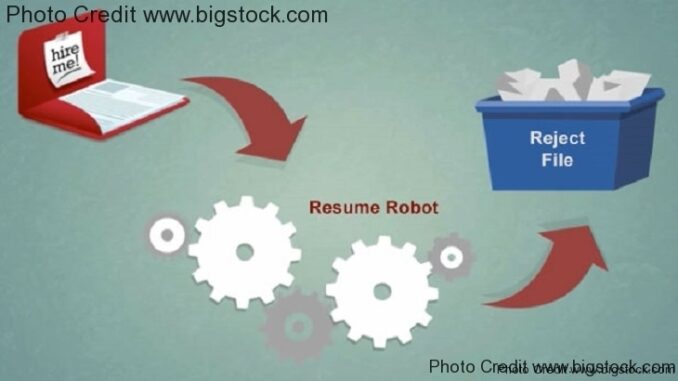
We live in the age of the machines. And I’m not talking about a universe where Arnold Schwarzenegger throws out zingy one-liners, either. Today more than ever, computer software is integrated with the way that we do things. In recruitment, it’s no different as many companies are adopting automated systems to weed out potential applicants.
Many recruiters and HR departments use Applicant Tracking Systems or ATS, in order to automate the application process by using algorithms to pre-screen resumes. The vast majority of Fortune 500 companies now use these systems with estimates as high as 90% participation. More interestingly, around 75% of resumes are disqualified by this software, meaning that if you aren’t getting any call-backs, there’s a good chance that you’re being disqualified by a computer program.
In the old days of ATS, the available systems were pretty limited in functionality. Mainly, they pulled resumes from popular sites and populated a database based on keywords. Since the great recession however, the software has needed to become more advanced in order to effectively capture the best candidates applying. Contemporary ATS like iCIMS’s Applicant Tracking System and Bullhorn’s CRM software boast a variety of advanced features like reporting and metrics, integration with social media, and pre-screening questionnaires. You can’t “trick” the software as easily as before, but there are some strategies to employ when applying.
Don’t fall victim to the machines, here are 7 ways to optimize your resume for ATS.
- No Padding
You know that job you had that fills the gaps for when you weren’t working in your industry? For some people it’s bartending, for others it’s data entry, but to the ATS it’s meaningless. A computer won’t ask what happened during that gap in your employment, just like it won’t ask how a serving job relates to marketing and communications. Leave out the padding.
- Contact Information at the Top
This seems like a no-brainer but headers and footers can often mess up ATS’ programming, meaning that if a name, address, and contact information aren’t at the top it’s going to automatically reject your resume. Believe it or not, those age-old conventions we learned in junior high of having a header and footer can actually get you disqualified for a job you’re qualified for.
- Spelling Matters
A decade ago you could submit your resume and there was a good chance a human would be looking at it. Misspelling something was painful, but wouldn’t automatically disqualify you. In the days of ATS this is not the case at all.
Make sure that everything is spelled correctly. Applicant Tracking Systems can’t compensate for your poor grammar, and thus will not log keywords if they are misspelled. Important experience or skills could be left out, making your entire resume invalid before a human can read it.
- Formatting
For as advanced as it is, ATS can’t capture data in certain formats. PDFs for example, have traditionally messed up the ATS’ results. Make sure that you send your resume as a Word doc, and remove any unnecessary formatting. Often, Applicant Tracking Systems will reduce whatever document you send into a simple .txt file, and much of that fancy formatting will result in an unreadable resume.
Additionally, make sure you format your job descriptions the right way. The company should come first, followed by the title, then followed by the dates you worked. Getting fancy here may mean that the software misreads your resume and the result can be misleading.
- Mirror the Job Ad
This is where the custom resume comes in. The more you mirror the ad you are applying to, the more likely you are capturing the required keywords to move onto the next round. You never want to lie about job experience, but if the terminology in the job ad differs from what you are used to using in your current position, you should alter your resume to reflect the prospective employer’s lingo.
If you want an automated way to check if your resume matches a job ad, check out this useful tool called Jobscan that does it for you.
- Keywords
Keywords are incredibly important, as ATS will be primarily using these to sort qualified candidates. If you haven’t read my previous article about resume keywords, you should definitely check it out here.
In short, it’s fairly simple. Job titles, key experience, and past employers are all crucial for ATS. Some of these keywords will be flagged, and will be necessary to move onto the next round. If you have the experience that’s required but don’t list it accurately, you could become disqualified from a job you are fully capable of doing.
- Go Long
If you know that the company you are applying to is likely to use ATS feel free to make your resume as long as you want. Traditionally it’s always thought that one or two pages are acceptable for human eyes, but if you aren’t getting past Applicant Tracking Systems this is a moot point. A long resume allows you additional room to put keywords, and ensure that you aren’t being disqualified by the system.
At the end of the day if you resume gets past the ATS, it will still have to be seen by a human, so keep this in mind. You can’t get away with just listing keywords in a nonsensical list as an actual person will be reading your resume at some point. Additionally, you likely can’t get away with a resume that is over 4 pages long. Ultimately you need to balance keyword optimization, ensuring your resume gets accurately captured by ATS, as well as it being coherent when it finally gets to a hiring manager. Keep it genuine and keep it effective.
